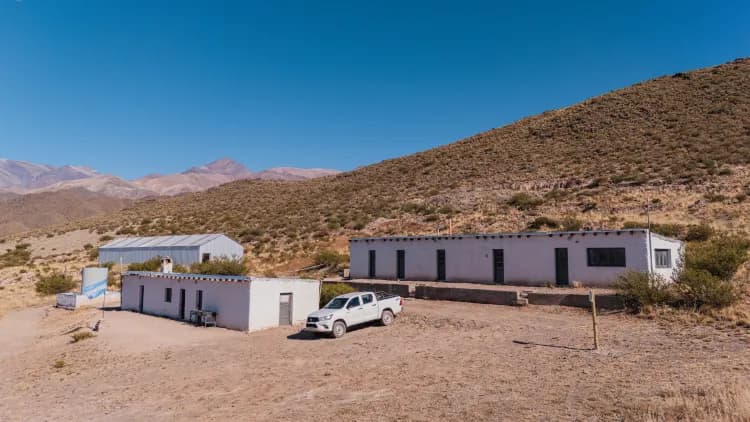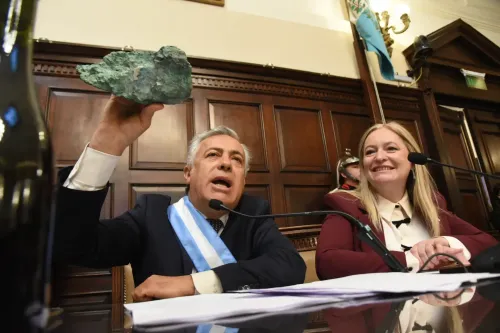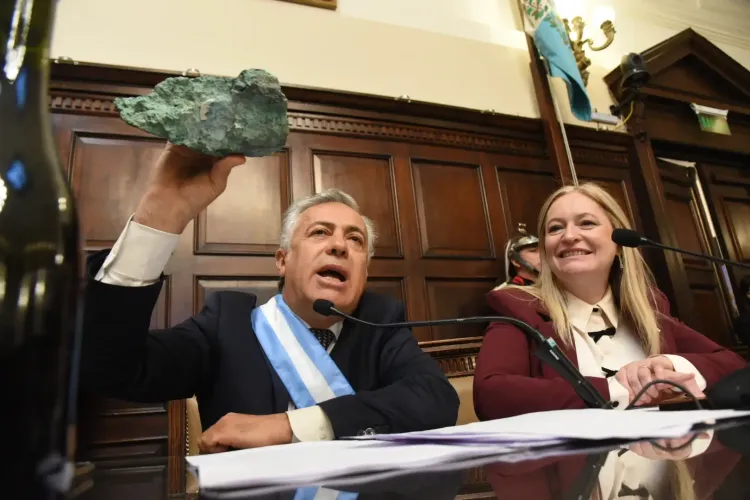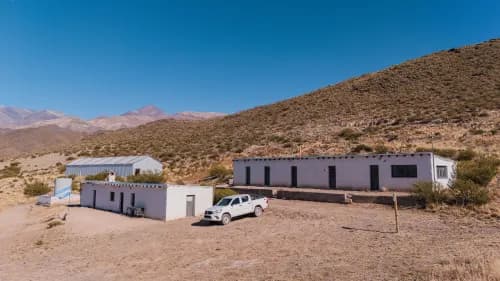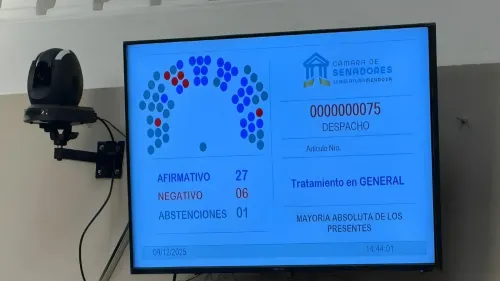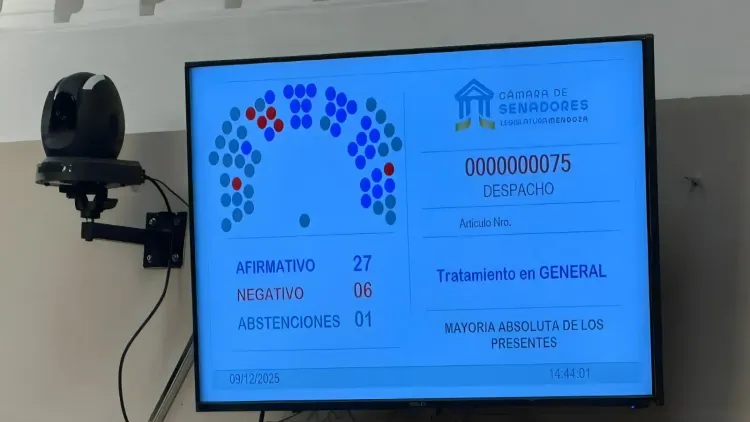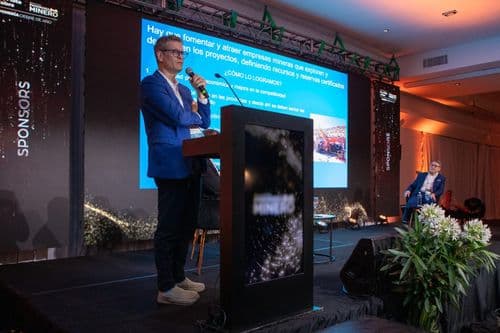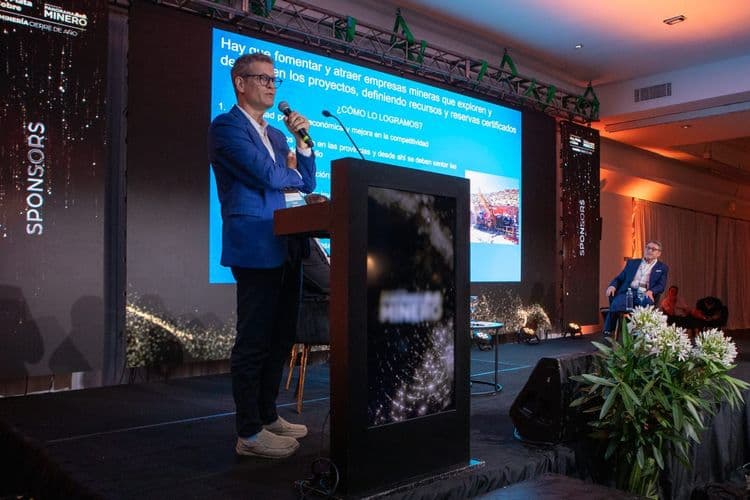The third update of the Environmental Impact Report for the Tres Quebradas project was discussed in an atmosphere of respect, transparency, and the pursuit of consensus.
By Panorama Minero
“Fiambalá – As an Exercise in Participatory Democracy and Environmental Transparency”, the third public hearing was held, organized by the Ministry of Mining of Catamarca in coordination with the Ministry of Water, Energy and Environment, the Municipality of Fiambalá, and representatives of the company responsible for the Tres Quebradas project.
The event, which was broadcast live and open to the entire community, enabled a direct and orderly dialogue among local residents, authorities, and technical experts. Citizens participated actively—through both spoken and written questions—raising key concerns about the potential environmental, social, and economic impacts of mining in the region.
Clear Information and Active Participation
During the opening session, provincial authorities such as Antonina Velasco, Teresita Regalado, Jessica Jornet, and technical experts in Geochemistry, Social Protection, and Environmental Oversight explained the purpose of the meeting: to present the third update of the Environmental Impact Report for the lithium project and to promote an open and respectful space for public consultation. Representatives from the Ministry of Environment, the Secretariat of Water Resources, and municipal officials also took part.
The speakers detailed how to access the updated report, the key aspects it covers, and how the technical evaluation process works under National Law 24.585, which regulates environmental impacts in mining. They also emphasized the importance of complying with environmental and social standards, and the role of oversight bodies in ensuring that mining operations are carried out within the legal framework.
One of the most anticipated moments was the exchange between residents and authorities. In a dynamic and respectful format, key questions were addressed—reflecting both long-standing concerns and new issues arising from the scale of the project.
1. Environmental Impact and Water Sources
Residents from various parts of Fiambalá raised specific concerns about the effects of drilling on underground aquifers, the risk of chemical contamination, and the impact on local flora and fauna.
Authorities answered that the design of the wells includes isolation systems to prevent leaks and cross-contamination. Water quality monitoring is conducted before, during, and after operations. Additionally, native fauna protection programs are being implemented, and environmental monitoring stations are used to detect any changes. In the event of incidents, immediate remediation protocols are applied.
2. Local Development and Employment
A recurring concern was how to ensure that the Fiambalá community truly benefits economically from the project. Residents called for greater inclusion of local workers, support for regional suppliers, and transparency in the hiring process.
In response, officials from the Ministry and the company emphasized that specific quotas are reserved for local labor and that technical training programs related to mining are being implemented, enabling more residents of Fiambalá to apply for skilled positions. They also reported on agreements with technical schools and announced new opportunities for professional training in coordination with educational institutions.
3. Oversight and Regulation
Several questions focused on the role of the State as the guarantor of environmental compliance. Residents demanded to know who monitors the company and what consequences are applied if regulations are not followed.
Representatives from the Ministry of Mining explained that both scheduled inspections and unannounced audits are carried out, involving technical teams from various departments. Official reports are issued, and sanctions are applied in cases of non-compliance. In addition, residents were invited to use the environmental complaints system, which is active and can be accessed both in person and online.
4. Transparency and Access to Information
Participants expressed the need for these types of dialogue spaces to have been available much earlier, so the community could have been better informed from the initial stages of the project.
Authorities acknowledged this concern and committed to maintaining a “schedule of regular meetings,” with both technical and political representation, to ensure transparent and participatory follow-up. It was also reiterated that the full report is available to the public, and assistance is being offered to those who need help reading or interpreting the document.
5. Contingencies and Mitigation Measures
Another key topic was what will happen if contamination is detected in water, soil, or air. Questions were also raised regarding the company's responsibility in the event of environmental damage.
Technical experts explained that there are “specific contingency plans” in place for various types of emergencies. In all cases, immediate response is planned, including the suspension of activities if necessary, remediation of the damage, and ongoing monitoring. Authorities emphasized that the social and environmental license for any project depends on responsible environmental behavior.
6. Citizen Participation
Finally, residents asked how they can influence future decisions.
Authorities reiterated that the consultation process remains open and invited everyone to participate in workshops, meetings, and upcoming public discussions. “Each citizen’s opinion is part of the process. There is no sustainable project without an informed and involved community,” they stated.
An Ongoing Process
Despite differences in opinion, the third public hearing delivered a clear message: the community wants to be heard, to take part in decision-making, and to play a leading role in the development of its territory.
The path toward sustainable mining requires more than technology and regulation—it also demands trust. And trust is built through clear information, ongoing spaces for dialogue, and a proactive State presence.



